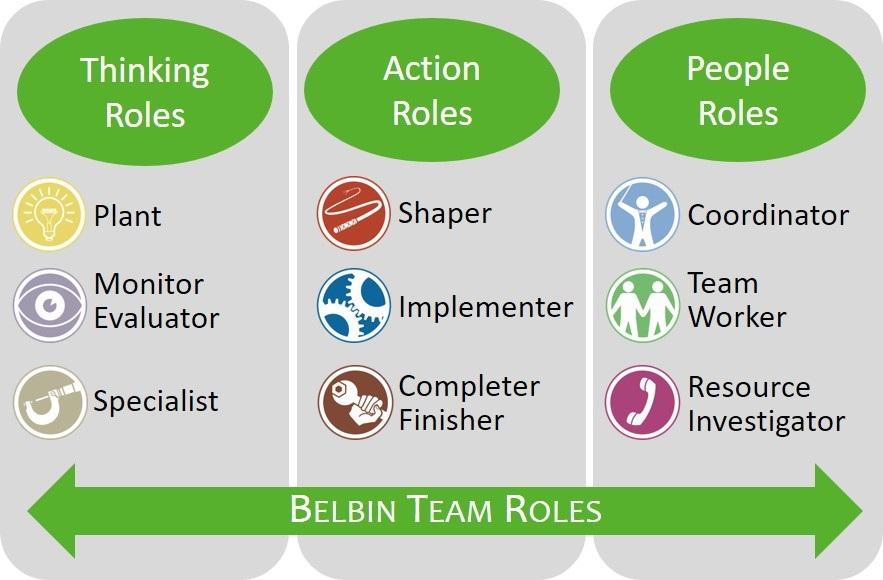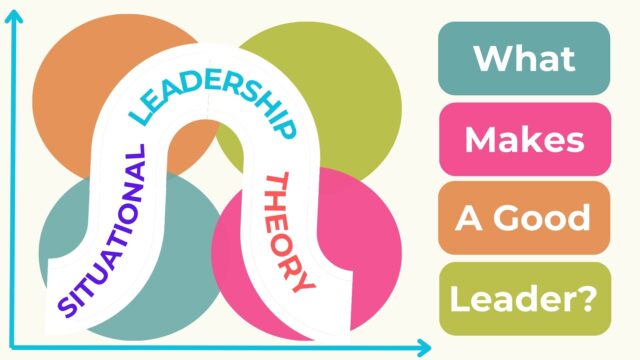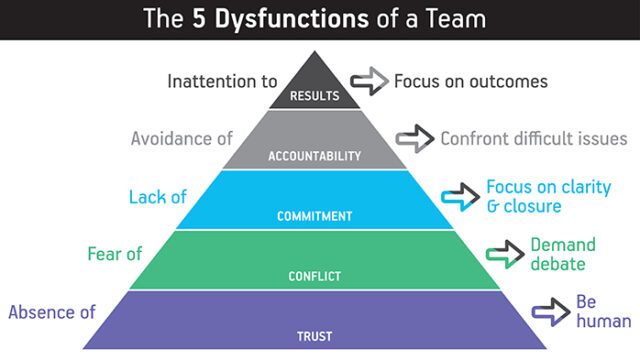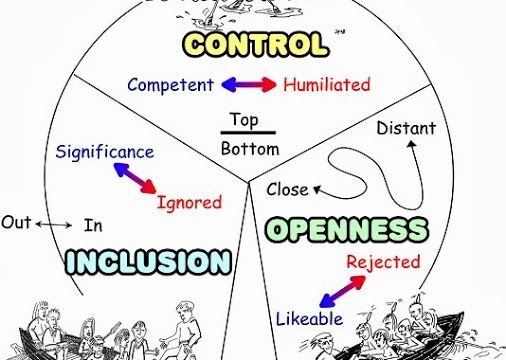Belbin Team Roles Model
The Belbin Team Role model is a theory of team roles and management developed by Dr. Meredith Belbin, a British researcher and management consultant. Belbin's theory suggests that team effectiveness depends on how well team members can work together and use their natural strengths and abilities to accomplish their goals. The model identifies nine team roles that individuals naturally adopt within a team, categorized into three groups: Action-Oriented, People-Oriented, and Thinking-Oriented.
Belbin's theory was developed through his observations of how teams work and his analysis of their dynamics. In the 1970s, he conducted extensive research on team performance and identified that effective teams had diverse individuals who complemented each other's strengths and weaknesses. This led him to develop the concept of team roles, defined as "a tendency to behave, contribute, and interrelate with others in a particular way."

The Belbin Team Role model consists of nine different roles, each with unique strengths and weaknesses. These roles are:
- Plant: Creative and unorthodox, the Plant generates new ideas and approaches to problem-solving.
- Monitor Evaluator: Analytical and objective, the Monitor Evaluator assesses ideas and plans with a critical eye and provides a realistic assessment of their feasibility.
- Coordinator: Confident and mature, the Coordinator clarifies goals, delegates tasks, and ensures everyone works towards the same objective.
- Resource Investigator: Outgoing and enthusiastic, the Resource Investigator explores new opportunities and makes contacts that can help the team achieve its goals.
- Implementer: Practical and reliable, the Implementer turns ideas into actions and ensures that tasks are completed efficiently and effectively.
- Completer Finisher: Conscientious and detail-oriented, the Completer Finisher ensures that tasks are completed to a high standard and that deadlines are met.
- Teamworker: Diplomatic and supportive, the Teamworker fosters harmony and cooperation within the team and helps to resolve conflicts.
- Shaper: Dynamic and challenging, the Shaper provides the drive and energy needed to overcome obstacles and achieve goals.
- Specialist: Single-minded and dedicated, the Specialist brings expert knowledge and skills to the team that is essential for its success.
Each team member is likely to have a dominant team role, as well as secondary roles that they can also perform effectively. Understanding these roles can help team members work together more effectively by recognizing each other's strengths and weaknesses and allocating tasks accordingly.
For example, a team with a dominant Plant may generate many creative ideas but struggle to implement them effectively without the help of an Implementer. A team with a dominant Monitor Evaluator may be very good at assessing ideas. Still, it may need a Shaper to provide the energy and motivation to turn those ideas into actions.

The Belbin Team Role model is important for teams because it helps them understand their strengths and weaknesses and those of their colleagues, leading to better collaboration and higher performance levels. By recognizing each individual's natural team role, teams can allocate tasks more effectively, ensure that all perspectives are considered, and build a more cohesive and productive team.
The Belbin Team Role model is helpful for organizations in building effective teams and identifying the right people for specific roles. The model can be used in recruitment, selection, team building, and staff development. Organizations can create a more productive and efficient workplace by utilizing the model.
The Belbin Team Role model is valuable for trainers in developing team skills and facilitating team-building activities. It provides a framework for understanding team dynamics and enables trainers to design activities that help teams work more effectively.
An analogy to make the Belbin Team Role model concrete is to think of a sports team. Each player has their strengths and weaknesses, and a successful team is one where each player knows their role and how they contribute to the team's success. Another analogy is to think of a symphony orchestra. Each member has a specific role to play, and the success of the performance depends on each member's ability to play their part in harmony with the others.
The Belbin Team Role model can be used in various settings to help individuals and teams better understand their strengths and weaknesses and improve their performance. Here are some ways and places where this model can be used:
Team building: The Belbin Team Role model can be used in team-building workshops to help team members understand each other's strengths and weaknesses and to develop strategies for working more effectively together. The model can help teams identify improvement areas and develop action plans to address these issues.
Project management: The Belbin Team Role model can be used to ensure that each team member is assigned tasks suited to their strengths and abilities. Understanding each member's role allows project managers to allocate resources more effectively and ensure that projects are completed on time and within budget.
Staff development: The Belbin Team Role model can be used in staff development to help individuals understand their strengths and weaknesses and develop strategies for personal growth and development. By understanding their team role, individuals can work on developing skills that will make them more effective team members.
Recruitment and selection: The Belbin Team Role model can be used in recruitment and selection to help identify individuals who will be a good fit for specific roles. By understanding the different team roles and their associated strengths and weaknesses, recruiters can identify candidates who complement the existing team members.
Conflict resolution: The Belbin Team Role model can be used in conflict resolution to help teams understand why conflicts arise and develop strategies for resolving them. By understanding each team member's role and how they contribute to the team, teams can identify areas of disagreement and work on finding solutions that are acceptable to everyone.
The assessment tool for Belbin Team Roles is attached. You may use it to analyze yourself or your team. Detailed explanations of the Team Roles are provided in the tool.







Mustafa Erdoğan
I wonder how these roles can relate to learning styles. 🙂